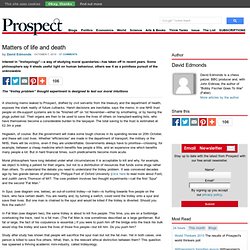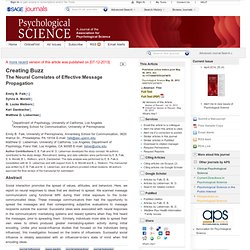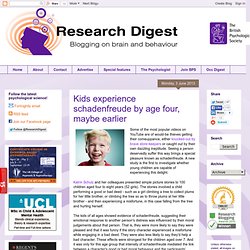

Good Deeds Gone Bad. The Nozickian case for Rawls’ difference principle. Do People Try To Dishonestly Signal Fairness? “My five-year old, the other day, one of her toys broke, and she demanded I break her sister’s toy to make it fair.

And I did.” – Louis CK This quote appeared in a post of mine around the middle of last month, in which I wanted to draw attention to the fact that a great deal of caution is warranted in inferring preferences for fairness per se from the end-states of economic games. Just because people behaved in ways that resulted in inequality being reduced, it does not necessarily follow that people were consciously acting in those ways to reduce inequality, or that humans have cognitive adaptations designed to do so; to achieve fairness.
In fact, I have the opposite take on matter: since achieving equality per se doesn’t necessarily do anything useful, we should not expect to find cognitive mechanisms designed for achieving that end state. Things you might want to know about people who believe in pure evil. Psychologists have devised two new scales for assessing people's belief in pure evil and pure good - characteristics they say have important links with broader attitudes towards altruism and the use of violence.

Russell Webster and Donald Saucier first demonstrated the validity and reliability of their scales with over two hundred undergrad students. The belief in pure evil questionnaire contains 22 items including "Some people are just pure evil" and "people who commit evil acts always mean to harm innocent people", each rated on a sliding 7-point scale of agreement. The belief in pure good questionnaire has 28 items including "There is such a thing as a truly selfless/altruistic person" and "selfless people help anyone in need, even their rivals.
" Scores on the two scales are entirely uncorrelated suggesting they are measuring distinct constructs. Scores were also stable over time, based on re-retesting a subsample of participants two months later. Webster RJ, and Saucier DA (2013). PsycNET - Display Record. Two Dimensions of Value: Dopamine Neurons Represent Reward But Not Aversiveness. Whereas reward (appetitiveness) and aversiveness (punishment) have been distinguished as two discrete dimensions within psychology and behavior, physiological and computational models of their neural representation have treated them as opposite sides of a single continuous dimension of “value.”

Here, I show that although dopamine neurons of the primate ventral midbrain are activated by evidence for reward and suppressed by evidence against reward, they are insensitive to aversiveness. This indicates that reward and aversiveness are represented independently as two dimensions, even by neurons that are closely related to motor function. The Whistle-Blower’s Quandary. Matters of life and death. Interest in “trolleyology”—a way of studying moral quandaries—has taken off in recent years.

Some philosophers say it sheds useful light on human behaviour, others see it as a pointless pursuit of the unknowable The “trolley problem” thought experiment is designed to test our moral intuitions A shocking memo leaked to Prospect, drafted by civil servants from the treasury and the department of health, exposes the stark reality of future cutbacks. Harsh decisions are inevitable, says the memo; in one NHS trust people on life-support systems are to be “finished off” on 1st November—either by smothering, or by having the plugs pulled out. The Harm-Made Mind. Observing Victimization Augments Attribution of Minds to Vegetative Patients, Robots, and the Dead Adrian F.

Ward, Harvard University, Department of Psychology, William James Hall, Room 1468, 33 Kirkland St., Cambridge, MA 02138 E-mail: award@fas.harvard.edu Author Contributions All authors developed the experimental concept and contributed to the experimental design. Testing and data collection were performed by A. F. Ward and A. The Trolley dilemma revisited. Most of us agree that murder, rape and plunder are wrong.

Moral psychology gets more tricky when the interests of the many are pitted against the few, as in the classic "trolley dilemma", in which a person must divert a hurtling trolley towards a lone victim, so as to save the lives of five others. Creating Buzz. The Neural Correlates of Effective Message Propagation Emily B.

Falk, University of Pennsylvania, Annenberg School for Communication, 3620 Walnut St., Philadelphia, PA 19104 E-mail: falk@asc.upenn.edu Matthew D. Lieberman, University of California, Los Angeles, Department of Psychology, Franz Hall, Los Angeles, CA 90095 E-mail: lieber@ucla.edu Author Contributions E. Brain can plan actions toward things the eye doesn't see. People can plan strategic movements to several different targets at the same time, even when they see far fewer targets than are actually present, according to a new study published in Psychological Science, a journal of the Association for Psychological Science.

A team of researchers at the Brain and Mind Institute at the University of Western Ontario took advantage of a pictorial illusion—known as the "connectedness illusion"—that causes people to underestimate the number of targets they see. When people act on these targets, however, they can rapidly plan accurate and strategic reaches that reflect the actual number of targets. Using sophisticated statistical techniques to analyze participants' responses to multiple potential targets, the researchers found that participants' reaches to the targets were unaffected by the presence of the connecting lines.
Mind and Morality. One of the themes of this blog, reflecting my skeptical philosophy, is that our brains construct reality – meaning that our perceptions, memories, internal model of reality, narrative of events, and emotions are all constructed artifacts of our neurological processing.

This is, in my opinion, an undeniable fact revealed by neuroscience. This realization, in turn, leads to neuropsychological humility – putting our perceptions, memories, thoughts, and feelings into a proper perspective. Thinking that you know what you saw, or you remember clearly, or that your “gut” feeling is a reliable moral compass, is nothing but naive arrogance. Perhaps the most difficult aspect of constructed reality to fully accept is our morality. When (And Why) Is Discrimination Acceptable? As a means of humble-bragging, I like to tell people that I have been rejected from many prestigious universities; the University of Pennsylvania, Harvard, and Yale are all on that list. Also on that list happens to be the University of New Mexico, home of one Geoffrey Miller.
Very recently, Dr. Kids experience schadenfreude by age four, maybe earlier. Some of the most popular videos on YouTube are of would-be thieves getting their comeuppance, either knocked-out by brave store-keepers or caught out by their own dazzling ineptitude.

Seeing a person deservedly suffer this way brings a special pleasure known as schadenfreude. A new study is the first to investigate whether young children are capable of experiencing this delight. Katrin Schulz and her colleagues presented simple picture stories to 100 children aged four to eight years (52 girls). The stories involved a child performing a good or bad deed - such as a girl climbing a tree to collect plums for her little brother, or climbing the tree so as to throw plums at her little brother - and then experiencing a misfortune, in this case falling from the tree and hurting herself. Fulfilment of intention and desire in children's judgements of emotion for sociomoral events - Shiverick - 2013 - British Journal of Developmental Psychology.
The Schadenfreude Objection to John Stuart Mill. The Schadenfreude Objection to Geoffrey Sayre-McCord’s Defense of Mill’s Principle of Utility Mill Resurrected. Low Levels of Empathic Concern Predict Utilitarian Moral Judgment. Can You Run Out of Empathy? Is empathy a limited resource, easily depleted and restricted to those closest to us? That’s the argument psychologist Paul Bloom makes in an essay for this week’s New Yorker , subtitled “The case against empathy.” How to encourage moral behavior. Suppose a high school student cheats on a test. How harshly should a parent or teacher treat this offense?
The efficacy of punishment in such situations has been controversial, and a new study sheds some light on the consequences of punitive control in moral matters. When someone behaves immorally, a psychologist would typically say that the individual has not internalized the moral norm; that is, she may profess that an action is morally wrong, but she has not really taken that information to heart. How can a parent or teacher encourage such internalization? Trends in Cognitive Sciences - Explaining moral religions. Review. Understanding Morality from an Evolutionary Perspective: Challenges and Opportunities - Keefer - 2013 - Educational Theory. Do people turn mean because they're helpless? Whoops, just realized that the symbol you posted indicated irony or sarcasm.
Feel free to ignore my response! It Is in Our Nature to Need Stories. It is in our nature to need stories. Review: experiences of stigma associated with diabetes » The Diabetes Elf. People with diabetes often experience stigma in association with the disease. However, this is an under-researched area compared with stigma associated with other conditions. Morality: incomplete without the cerebellum? + Author Affiliations Correspondence to: Jeremy D. Schmahmann, MD, Department of Neurology, Massachusetts General Hospital, CPZS-340, 175 Cambridge Street, Boston, MA 02114, USA E-mail: jschmahmann@partners.org Received January 15, 2013.
Not Like Me = Bad. Infants Prefer Those Who Harm Dissimilar Others. Journal of Experimental Social Psychology - Moral Contagion Effects in Everyday Interpersonal Encounters. Highlights. PsycNET - Display Record. Morally ‘Tainted’ Money Seen as Devalued. By Rick Nauert PhD Senior News Editor Reviewed by John M. Grohol, Psy.D. on April 25, 2013. Humans feel empathy for robots: fMRI scans show similar brain function when robots are treated the same as humans. From the T-101 to Data from Star Trek, humans have been presented with the fictional dilemma of how we empathize with robots. “A Lot More Bad News for Conservatives, and a Little Bit of Bad News for Liberals? Moral Judgments and the Dark Triad Personality Traits: A Follow-up Study” Jonathan Haidt for Democracy Journal: Of Freedom and Fairness. Issue #28, Spring 2013 Jonathan Haidt In 1943, Allied forces achieved a hard-fought victory in the North African campaign, captured Sicily, and began to fight their way up the Italian peninsula.
Victories in places such as El-Alamein, Salerno, and Anzio gave America some confidence that the Allies would ultimately prevail in Europe. That confidence allowed the American public to shift more of its attention to the Pacific Theater. Jonathan Haidt for Democracy Journal: Of Freedom and Fairness. Nigel Warburton –Cosmopolitanism.
Investigating the actor effect in moral emotion expectancies across cultures: A comparison of Chinese and Canadian adolescents - Krettenauer - 2013 - British Journal of Developmental Psychology. Family Guy's Stewie is real: Babies share evil genius's mean streak. Do-gooder or ne'er-do-well? Behavioral science explains patterns of moral behavior. PsycNET Login. Troy Jollimore – Godless but good. Serotonin Modulates Striatal Responses to Fairness and Retaliation in Humans. Workplace Sexual Harassment: Gender Police Officers and Explaining Why Men Harass Other Men At Work. Daniel Kahneman: The riddle of experience vs. memory.
Have human rights hijacked the language of morals? – and other questions: Laws. Human Connectome Project Generous economic investments after basolateral amygdala damage. Wholesome Foods and Wholesome Morals? Players of Matching Pennies automatically imitate opponents’ gestures against strong incentives. Chimpanzees play the ultimatum game. Attributing False Beliefs About Object Identity Reveals a Signature Blind Spot in Humans’ Efficient Mind-Reading System. Politics and the English Language. News in Brief: Brain region associated with selfishness. Research » Blog Archive. Research » Blog Archive. Dylan Evans – On evolution and inequality. How Lance Helps Us Avoid Our Temptation to Lie.
Psychological Ecology. Bystander Responses to a Violent Incident in an Immersive Virtual Environment. A stopwatch on the brain's perception of time. Training the Will. Rejection of unfair offers in the ultimatum game is no evidence of strong reciprocity. The Taste for Being Moral by Thomas Nagel. Why Your Opinion About Music Can Be Wrong. Beveridge report: From 'deserving poor' to 'scroungers'? Blog Archive Classroom Ethics 101 « Kant's Account of Reason. We underestimate the benefits of nature. Answer three 'why' questions: Abstract thinking can make you more politically moderate. Empathy represses analytic thought, and vice versa: Brain physiology limits simultaneous use of both networks.
Lab UK - Experiments - Test Your Morality. Moral licensing & cherry-picking. Young children's moral understanding more sophisticated than previously thought. Testosterone levels are linked to honesty. Being Wrong about Abortion. People make more moral decisions when they think their heart is racing. A Vote for Reason. Why Mental Pictures Can Sway Your Moral Judgment. How to confuse a moral compass. After-birth abortion: why should the baby live? Taste buds and 'tude: The food and mood link. Monkeys benefit from reciprocity without the cognitive burden. Oxytocin is not a love drug. Don’t give it to kids with autism. Location of the mind remains a mystery - life - 22 August 2012. Disgust Sensitivity, Political Conservatism, and Voting. On the Role of Attention and Emotion in Morality. Using yuk! and "unnaturalness" to teach children new morals. Fairness modulates non-conscious facial mimicry in women. This Is Your Brain On Ethics - Really.
Wearing two different hats: Moral decisions may depend on the situation. Neuroscientists explore how longstanding conflict influences empathy for others. SPSP 2012: The Year Of Morality Research. Fighting Fire With Fire: Psychology Lessons From Newt. Ten Impressive Psychology Studies from 2011. The Trait Of Humility Predicts Helpfulness. Our mindreading of another person depends on how much skin we see! Is It Harder to be Single at Heart or Single and Wishing to be Coupled? Can God and Gratitude Help Your Mental Health? Making Life-Or-Death Moral Choices in a Virtual World. Does the Impact of Positive Emotions Differ Across Cultures? Individual Beliefs Lead to Gender Discrimination.